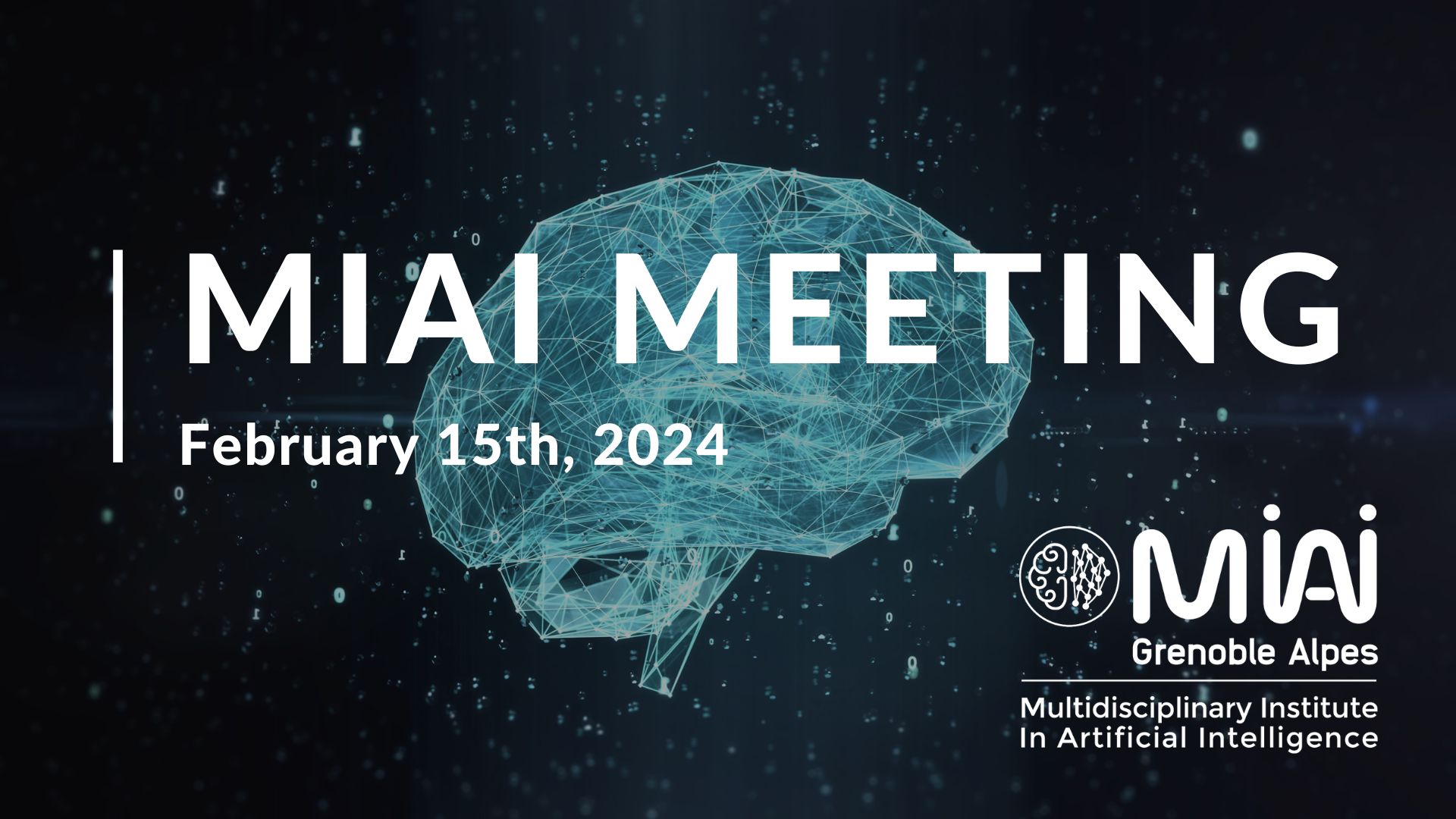MIAI MEETING - 15th February 2024
On February 15, 2024

PROGRAM OF THE MEETING
11:00 – 11:05:
Introduction words , Hervé Martin & Eric Gaussier (Director and Scientific director of MIAI)11:05 – 11:20:
Presentation of the Pôle universitaire d’innovation FITInnovE, coordinated by UGA, Gaëlle Calvary
11:20 – 11:35:
MIAI Cluster : Hervé Martin & Eric Gaussier (Director and Scientific director of MIAI)11:35 – 11:50:
Structuring and developing AI on the Clermont-Ferrand site. Vincent Barra (Professor in Computer Science at the LIMOS lab of Clermont-Auvergne University and CNRS).
11:50 – 12:05:
Presentation of the education program of MIAI. Kim Thang Nguyen (Education Director of the MIAI Institute and Professor of Computer Science at Grenoble-INP, Grenoble Alpes University)
12:05 – 12:35:
Context Guided Behavior in Natural and Artificial Systems, Pia Bideau (MIAI Research Fellow Chair, UGA)
Finding the right abstractions of a rather complex high dimensional sensory input allows humans to flexibly adapt their behavior to ever changing environments. Effects can be seen in social cognition - e.g. context dependent perception of facial expression, as well as in physical interactions, such as object manipulation where an agent's movement has to constantly adapt to changing environments.
How do abstract representations of low level visual input evolve? More specifically, how does action shape learning of visual representations? My work aims at discovering and making use of information that arises by coupling vision and (sociainteraction. This opens an incredibly rich source of information about the visual structure, ranging from physical relations between motion and image formation to learned high level visual representations shaped by interaction with the environment and other peers.
In this talk, I will show how to reconcile machine learning with visual structure for behavioural synthesis in robotic applications, and how to extend machine learning by incorporating action information to structure learned latent spaces. Both of these strategies take steps towards machine learning with significantly reduced human supervision.
How do abstract representations of low level visual input evolve? More specifically, how does action shape learning of visual representations? My work aims at discovering and making use of information that arises by coupling vision and (sociainteraction. This opens an incredibly rich source of information about the visual structure, ranging from physical relations between motion and image formation to learned high level visual representations shaped by interaction with the environment and other peers.
In this talk, I will show how to reconcile machine learning with visual structure for behavioural synthesis in robotic applications, and how to extend machine learning by incorporating action information to structure learned latent spaces. Both of these strategies take steps towards machine learning with significantly reduced human supervision.
12:35 – 13:05:
Physics inspired machine learning at the atomic scale, Martin Uhrin (MIAI Research Fellow Chair, UGA)
Received wisdom would have us believe that inductive biases imposed on learning models can ultimately hold back progress, and that we may be better off applying more compute and gathering more data. And yet, physical systems such as molecules and materials obey well understood laws that cannot be violated. In this talk, I will outline how Euclidean symmetry-equivariant Neural Networks (E(3)NNs) provide a powerful counterexample where incorporating the symmetries of 3D space allows us to achieve state-of-the-art performance on a variety of learning tasks focused on predicting properties of atomistic systems. Beyond the exceptional accuracy of these models, they also exhibit excellent data-efficiency, a particularly important property when labels typically come from time-consuming experiments or quantum-mechanical calculations.
By way of introduction to the recently started chair titled "From Edisonian trial and error to the inverse design of materials and molecules", I will give a few examples of how we have developed E(3)NNs and other symmetry-aware models to predict materials properties as well as our first steps into inverse design using generative modelling. Finally, I will outline some of the goals for the chair over the next four years.
13:05 - 14:00:
Buffet lunch
Published on January 16, 2024
Updated on February 5, 2024
Updated on February 5, 2024
Date
On February 15, 2024
from 11 a.m. to 1 p.m Location
IMAG building
seminary room n°2 (main floor)
150 place du torrent
38400 Saint-Martin-d'Hères.
Or by ZOOM
Register HERE if you wish to participate in the buffet


